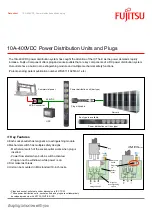
Single Phase EV Charger Protection unit
14 |
P a g e
Operating Instructions
With the supply switched on the electronic control circuit in unit will continuously monitor the incoming
supply voltage.
If the incoming supply is within limits, approximately 5 seconds after switching on the contactor will energise
and connect the load to the incoming supply and the CPC. The 5 second delay is to establish the incoming
supply is stable before applying power to the load.
In the event the SP-EVCP unit detects a fault condition on the monitored supply for a period of 4 seconds,
the electronic control circuit will de-energise the contactor coil which will open the contactor disconnecting
Line, Neutral and CPC from the load.
The contactor will remain de-energised until the monitored supply has returned to the correct level and
remained stable for a period of 3 minutes.
The current monitoring versions are supplied with a split core CT to allow the unit to monitor whole house
load. The CT should be clamped around the incoming supply cable directly after the service providers’
meter. It is designed to measure the FULL load current to the house. Connection diagrams are shown on
page 12.
The current monitor versions of the SP-EVCP-..(C) have a current curtailment function designed to prevent
the domestic load exceeding the deemed Domestic Load Level. There are 3 versions, 60A, 80A & 100A. All
versions function in the same way.
The total current of the incoming mains supply is measured by the CT.
Normal operational state – If the measured current demand exceeds the Domestic Load Level for 4 seconds
the supply to the EV charger is disconnected by de-energising contactor C1. The new value of the current
demand is noted by the processor 1 second after C1 has been de-energised.
Once the measured current demand has reduced to a value where the current required by the car charger
will not cause the current demand to exceed the deemed Domestic Load Level for a period of 3 minutes the
EV charger supply is reinstated by energising C1.



































